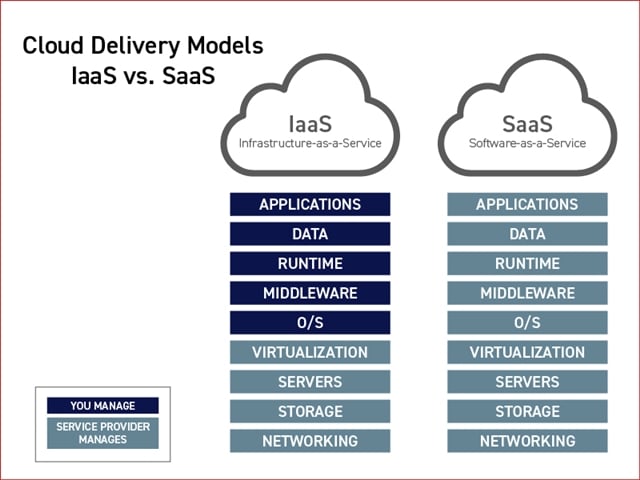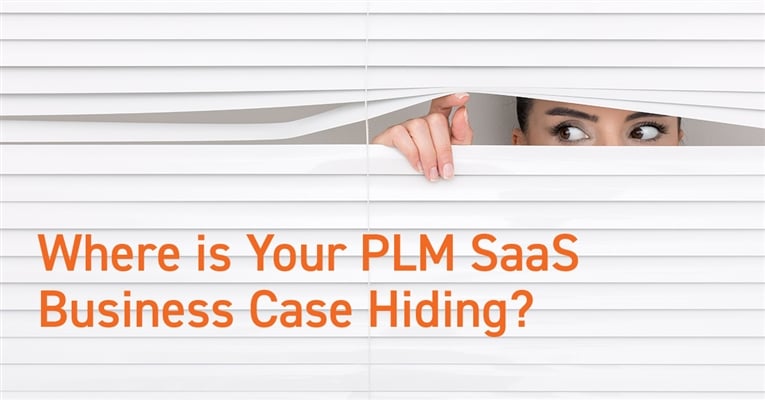This blog is the first of a two-part discussion on how to uncover the value of PLM SaaS. In this post, I’ll discuss focusing on the “right SaaS solution first,” creating the benefits of cloud migration by supporting the organization’s business objectives.
In part two of the blog, I will discuss how the right solution can improve IT capabilities and support future growth and the complexity of a PLM system.
Crafting a business case for your PLM investment is rarely easy, but many people are surprised at how difficult it can be to define the value of migrating a PLM system to software-as-a-service (SaaS). Many start out with the belief that a move to the cloud automatically comes with a solid business case. After all, it’s hard to read an article about the cloud without amazing testimonials of new and improved security levels, state-of-the-art technology, and unlimited scalability provided by giant cloud providers with an enormous benefit of scale to drive costs down. So why has the PLM SaaS proposition been so difficult for organizations to get their arms around?
I believe the conversation starts with understanding what it means to move to the cloud versus what it means to move to SaaS. Most IT professionals have a relatively clear understanding of what it means to move to the cloud. By shifting system infrastructure and the day-to-day management of the infrastructure from internal data centers and staff to a cloud provider, the IT function is moved to an external vendor. After many years, IT organizations clearly understand how to achieve financial benefits from outsourcing work to third-party entities.
Infrastructure-as-a-Service (IaaS) is only part of adopting a SaaS PLM solution
SaaS includes the benefits of moving to the cloud, and the right solution should include a collection of business benefits that enable an organization to implement and support its future PLM vision regardless of its complexity. Moving PLM to a SaaS offering that favors functionality with flexibility is vital to leverage the complexity of digital threads, digital twins, product simulations, and other valuable product development strategies. But to obtain the necessary business value for SaaS adoption, the company’s business transformational objectives, not their cloud adoption strategy, need to drive the lion’s share of the value. As Tech-Clarity’s president Jim Brown discussed in his recent white paper, “Achieving the Business Value of Cloud PLM,” IT will be required to change its “cloud first” directive to a “solution first” approach.

Think business before software
In Tech-Clarity’s white paper, Jim proposes that companies need to “think business before software.” Tech-Clarity’s research on long-term business success and profitability shows that “Customer relationships, digital transformation, long-term profits, product/service innovation, and workforce development are the most common profitability drivers. So why is so much of the emphasis on cost versus benefits when you don't see "short-term profits," let alone "software cost," at the top of this list? The business case for SaaS PLM should focus on enabling broader strategies that drive innovation and profitable revenue growth. That's much more strategic than reducing software spend.”
I really like this statement because it captures the strategic nature of investing in a PLM SaaS solution. The way to achieve a favorable business case is to focus on the value of a flexible PLM solution on the cloud rather than the adoption of a cloud strategy to manage your PLM solution. This approach provides the right PLM functionality to enable an organization’s digital transformation and product innovation efforts. Since these areas are an organization's profitability drivers, the business case value is found here. More importantly, the right PLM SaaS solution ensures that failure is not an option for these critical programs!
To maintain the value of any PLM system, companies need to prioritize functionality with flexibility. SaaS solutions are very effective in keeping solutions up to date with regular updates solving long-term issues with many legacy PLM systems. Flexibility can be another story. Regular upgrades will keep customers up to date with the vendor’s latest functionality, but what about the customer’s unique requirements? Too many PLM SaaS offerings limit or totally prevent customers from creating customizations to meet their specific needs. Only using out-of-the-box (OOTB), functionality will limit the value of the solution and is not realistic - especially considering the baseline of OOTB functionality for some PLM SaaS solutions is less than their flagship on-premises offering. As Tech-Clarity’s research stated:
“Manufacturers must recognize the need to manage the lifecycle of the enhancements and understand the ability for their cloud PLM architecture and policies to support effective customization. The State of Cloud PLM 2022 survey found that a full 87% of manufacturers that customized PLM say they will at least "most likely" need to keep their customizations when they upgrade their PLM system, and 40% say they "definitely" will. Therefore, it's vital to minimize the ongoing support cost, sometimes called the "tail" or "technical debt."
To manage this deficiency, many PLM SaaS providers propose a solution of “de-customization” to prospective customers which is another way of saying they must use the out-of-the-box functionality, leaving the customer dependent on the vendor’s roadmap.
Aras Enterprise SaaS is different
Aras Enterprise SaaS is the only SaaS offering for PLM that supports unlimited customizations and the capabilities to create unique solutions with no limits to complexity. Each customer’s unique functionality will be upgradable through the normal upgrade process, ensuring the solution will stay up to date with Aras’ roadmap while maintaining the customer’s investment in their PLM system. This is the only way to ensure that the value of a PLM solution will continue to increase as the solution grows in size and complexity. These topics were discussed at length at Aras’ ACE 2023 user conference in May, and IDC commented on it in their Market Note, Aras ACE23 User Conference1,
“Given Aras' emphasis on customization, the move to SaaS simplifies engaging systems integrators and contractors on an as-needed basis — to improve the time, cost, and quality of engineering and production operations.” They added, “Aras' overarching message is that the ease of implementing commercial off-the-shelf PLM applications has been overstated, and based on IDC's research into the number of consulting projects that are focused on implementation and integration, Aras may be correct.”
To hear additional insights on understanding the business value of SaaS PLM, register for the Aras webinar, “Letting Business Value Drive Cloud PLM Transition” featuring Jim Brown, president of Digital Innovation Research at Tech-Clarity. Learn how to align SaaS PLM with your business objectives and drive maximum value from your cloud solution.
To find out more about Aras Enterprise SaaS, read CIMdata’s commentary “Aras Enterprise SaaS:A Gen 2 Leader."
1IDC, Aras AC23 User Conference, Doc # US50665023, May 2023

